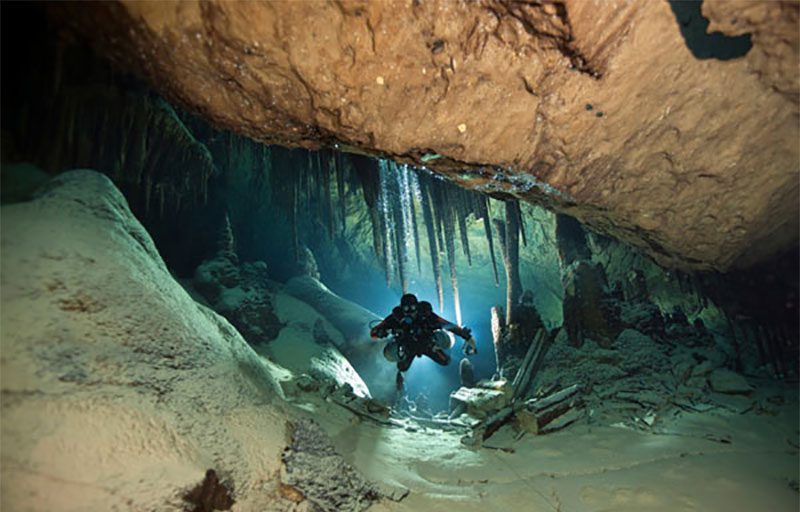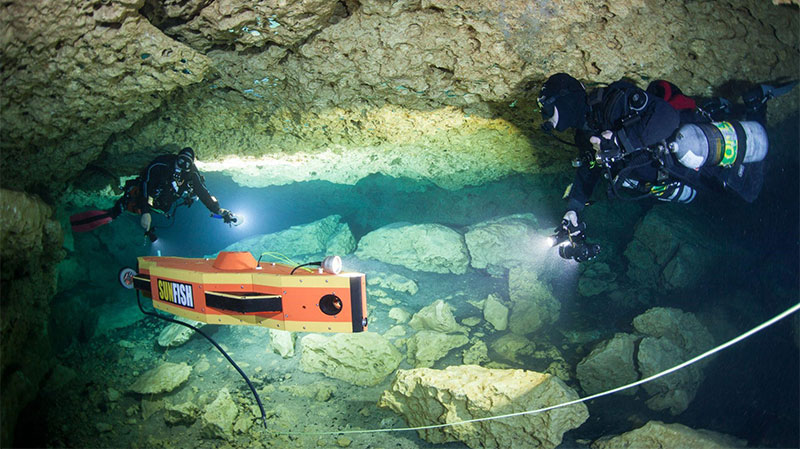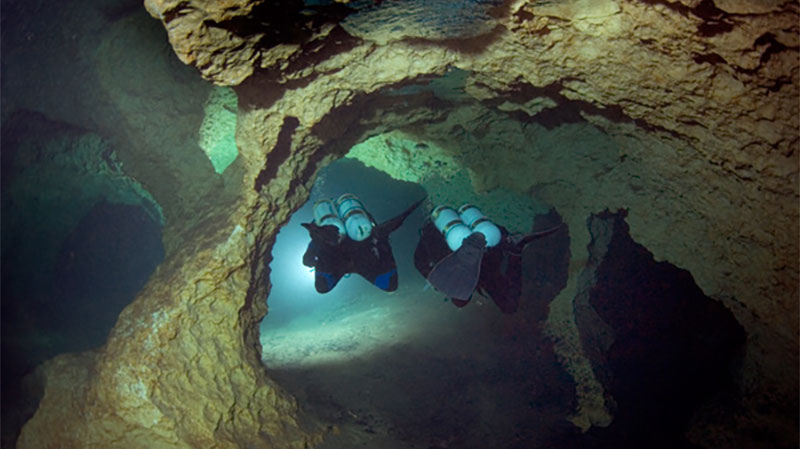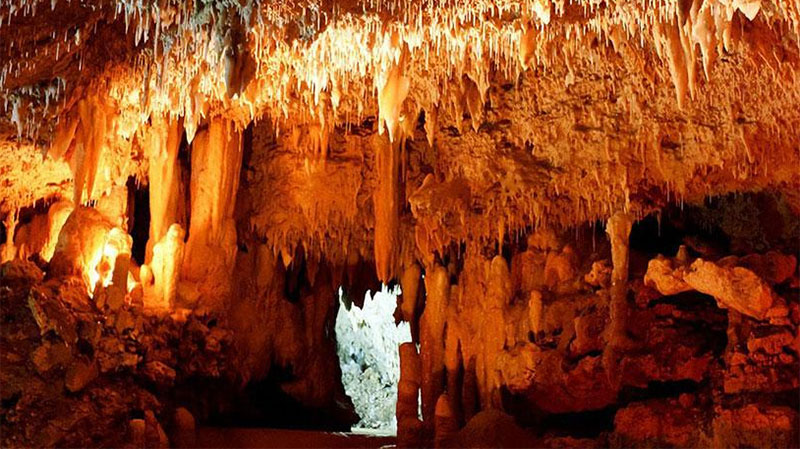What is the difference between a stalactite and a stalagmite?
Stalactites hang from the ceiling of a cave while stalagmites grow from the cave floor.

Stalactites hang from the ceiling of an underwater cave in Bermuda as a diver navigates through the cave system. Image courtesy of Jill Heinerth, Bermuda Deep Water Caves 2011 Exploration, NOAA-OER. Download image (jpg, 84.5 KB).
When discussing mineral formations in caves, we often talk about stalactites and stalagmites. A stalactite is an icicle-shaped formation that hangs from the ceiling of a cave and is produced by precipitation of minerals from water dripping through the cave ceiling. Most stalactites have pointed tips. A stalagmite is an upward-growing mound of mineral deposits that have precipitated from water dripping onto the floor of a cave. Most stalagmites have rounded or flattened tips.
There are many other types of mineral formations found in caves. Some deposits are named based on their appearances, such as a showerhead, which is a hollow cone-shaped formation, or a conulite, which is a “splash cup” that forms when water dripping rapidly through the cave ceiling flings aside loose particles on the cave floor. And the list goes on.
Some caves are fully submerged, underwater. Studying underwater caves, such as those in Bermuda, can give us clues about how climate and sea level have changed over time. This knowledge can, in turn, help us better understand and respond to current climate and sea level fluctuations. Exploration of submerged caves can also provide information about past peoples who may have inhabited the caves prior to submergence.


